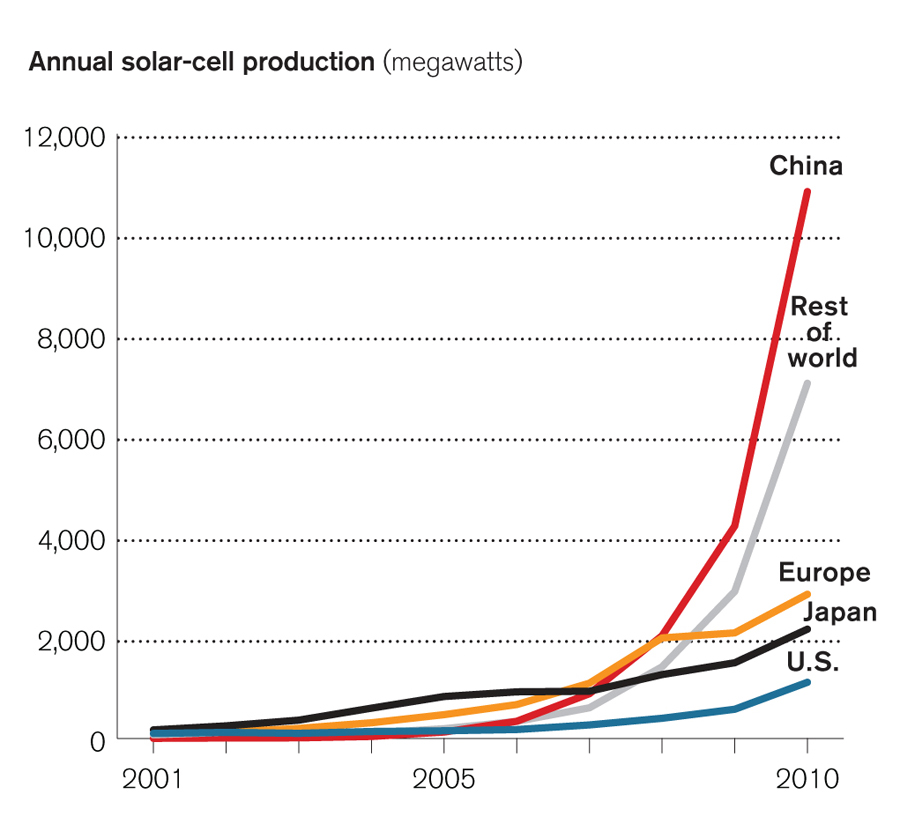The takeoff of solar-plus-batteries has only begun to ramp up the exponential curveI don't think this is the correct point of view. There is only one technology which is riding an exponential curve, and that's the miniaturization of electronics. Each time the feature size of a chip or memory register shrinks, the density of compute, memory and storage increases at an exponential rate. But most technologies don't work this way, and solar (despite being made from silicon) is not riding that curve.
Solar panels are a bulk-manufactured commodity. They aren't terribly hard to make; Elon Musk described them as being slightly simpler to make than drywall panels. And that's true. What's relevant to predicting the future of solar though is that no one predicts drywall panels to get 7% cheaper per year indefinitely. It's understood that their price is a function of their basic costs in terms of material, labor, and energy inputs, and that this can only be asymptotically approached, but not passed through (barring a technological substitute of some sort).
Batteries are similarly bulk-manufactured commodities. That's why Elon Musk isn't relying on Intel to deliver him cheaper batteries each year. He's building the Gigafactory instead because economies of scale are the only way to drive down bulk-manufactured commodity prices in the short-run. Technological price decreases happen at a much slower rate in this sector, when they happen at all. The same economies of scale are why Solar City bought Silevo and plan to product a 1 GW/year production plant in New York.
So will Gigafactories help make solar panels cheaper? Yes, but only once - and it already happened. The solar panel gigafactories were built in China. I'm going to show you a chart now and let you guess when they were built:
This huge build-out in industrial capacity is what drove down prices. However, there was over-investment (Over-investment in China?!?! Sacre bleu!) and the spot price of solar panels were driven below production costs, leading to massive losses. Now the butcher's bill is getting paid.
The #1 solar panel module maker in the world is Yingli, but they got there by selling their panels at a loss for the last four years, and now they're on the verge of bankruptcy. Baoding Tianwei, a State-owned firm in China that is a supplier to solar companies, has defaulted on its bonds, blaming the glut of supply in the solar market. These two firms are not alone, I'm sure.
There will be a retrenchment in the production of solar panels as firms exit the business. Supply will contract until it meets up with demand again and the producers are profitable. The steep price declines we have seen in the last ten years won't be totally reversed, but they won't be totally kept either. Not in the short term.
So is there hope for future price declines? Sure, as long as you keep your expectations modest. The Solar City-Silevo merger I mentioned earlier is basically a technology play, relying on Silevo's superior technology to improve solar efficiency at the same price as today's panels. That's a good thing, and the price per watt will fall from that. But we shouldn't expect exponential curves in this industry. It's going to be a long, hard, slog.

No comments:
Post a Comment